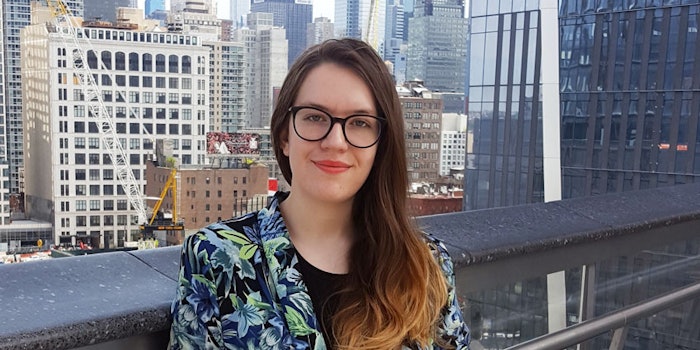
Shanin Jacquay works in regulatory affairs for L Brands. She obtained her Bachelor of Science and Pharmaceutical Sciences from the University of Toledo, with a focus in cosmetic science and formulation design.
"This program gave me hands-on experience in formulation of cosmetic and personal care products," she writes. "During my freshman year, I heard about regulatory affairs and its connection to the cosmetic industry. Regulatory affairs grabbed my attention and I knew immediately what path I wanted my career to follow."
She adds she is a big fan of rules and documentation, so she knew regulatory affairs would be a perfect fit. "After working in this field for more than a year, I know I picked the right path. My next step is to see how I can tie in sustainability (a hobby of mine) and to make more connections with other professionals in the industry."
See related: Sustainability, the Driving Force Behind Beauty Consumer Purchases
What interests do you have, or what work are you conducting, that is relevant to cosmetics R&D?
I am interested regulatory affairs and sustainability in the cosmetics industry. Currently, I work on ensuring the safety and compliance of all raw materials and formulas used in our cosmetics. This entails an in-depth analysis of ingredients and their function in the final product.
I check documentation and certifications to ensure ingredients meet the standards of our company policy and global regulations. This also means I must stay on top of trends and policies in the industry to guarantee L Brands is maintaining the best quality products possible.
What do you like most about your work? What do you find most challenging?
Regulations and consumer trends are always evolving, meaning there will always be something new to learn, which keeps my job interesting and challenging! Consumers continually challenge ingredients, from preservatives to palm oil. Consumers also demand new technologies, e.g., sulfate-free or CBD, in addition to more transparency; which is creating new regulations and policies.
In turn, these consumer demands are causing rapid shifts in the cosmetic regulatory profession, which presents a huge challenge for those working in the area—especially when the consumer trend is not scientifically supported. A perfect example is the paraben-free trend. Parabens have been tested as safe but companies do not want to put a “scary” ingredient in their product.
Another problem is waiting for regulations to catch up with trends. The industry has provided alternative preservatives but not all have been approved in the EU or by other governing bodies and therefore cannot be used as preservatives.
'I believe sustainability holds a world of untapped technology for the cosmetics R&D space.'
Describe one of your biggest achievements or “A-ha!” moments in cosmetics R&D.
I work closely with the R&D team, as they use the regulatory team for guidance and support. This means when they develop new products, I look through their documentation to make sure they are compliant. The R&D team is educated on cosmetic regulations, so compliance is usually not an issue. However, every once in a while, there is some ingredient that goes over the allowed threshold or a raw material from a supplier that needs documentation.
Such issues have inspired several "A-ha moments"—which are not a new discovery or a solution to a larger problem, but instead drive my every day tasks. Sometimes, these little things remind me why I am here and doing this job. If I can help company brands to achieve compliant and safe products, then I have achieved my job. This is very satisfying.
What about the cosmetics and personal care products industries excites you?
I love the growth and potential that the cosmetic and personal care industry has moving forward. Being a self-regulated industry means there are always things we can improve on or did not think about the day before.
Yes, more regulations also come out all the time, and I work closely with EU/China regulations; but there is still so much more we can do. From child laboring of mica to VOC emissions, there is always something to improve.
Additionally, as sustainability becomes more of a need in society, I get overwhelmed with excitement for ways to incorporate that into the cosmetic industry. Everyone looks at packaging and transportation, but it is in the small details, too. How much water are you using in your products? Are you sourcing fair trade ingredients? What is the impact of the ingredients on aquatic life? There are so many little details we can examine.
What areas or technologies do you think are untapped for cosmetics R&D?
I believe sustainability holds a world of untapped technology for the cosmetics R&D space. Currently we have California working to reduce VOC emissions, which means there is space for new formulations, better propellants, solvents and fragrances. I believe sustainable technologies will produce less water-heavy formulas, more vegan options, a new image as to what natural means, and so much more.
We can start by looking at the ingredients. Look at where they are derived from, the manufacturing process of just one ingredient, the harvesting impacts, and what ingredients are truly functional and necessary versus what sounds good on the ingredient list.
The industry is evolving, and I am grateful to be a part of it!










